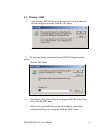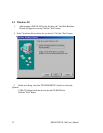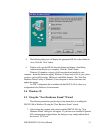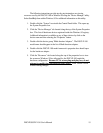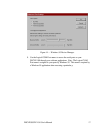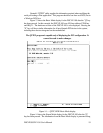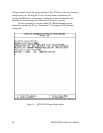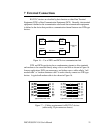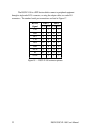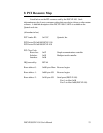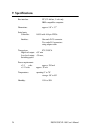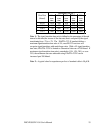
6 Other Operating Systems
Device drivers for Windows NT and OS/2 are also available for the
DSCLP-100. The board can be used under DOS and other operating systems as well
in many circumstances. The software described below can be downloaded from the
Quatech web site if it did not come with the board.
6.1 Windows NT
The Windows NT device driver is installed by running the SETUP program.
Up to 256 serial ports are supported. There is a command line-based configuration
utility which is used for adding PCI bus and ISA bus serial ports. Please refer to the
documentation included with the device driver for full installation and configuration
details.
6.2 OS/2
The OS/2 device driver supports up to 32 serial ports in a system. Installation
is a manual, but simple, process. Please refer to the documentation included with the
device driver for full installation and configuration details.
6.3 DOS and other operating systems
The DSCLP-100 is not a direct drop-in replacement for a legacy serial port
because its base address and IRQ cannot be fixed at values such as 3F8 hex, IRQ 4
(COM1) or 2F8 hex, IRQ 3 (COM2), etc. Rather, the system BIOS assigns the
address and the IRQ in a plug-and-play fashion at boot time. Software which is to use
the DSCLP-100 must be able to accommodate any valid assignments of these
resources.
For Windows 95/98/2000/ME, Windows NT and OS/2, the Quatech device
drivers determine what the resource assignments are and proceed accordingly. In other
cases, however, the user must intervene. The discussion below will center on DOS, but
the concepts can be applied to other operating systems as well.
Many DOS applications support user configuration of the base address and
IRQ of a serial port. Such applications can generally make use of the DSCLP-100.
Older applications, as well as some custom software, may use hard-coded standard
legacy serial port addresses. These applications will require modifications if they are to
use the DSCLP-100.
Custom applications for which the customer has source code can be modified
to make just a few PCI BIOS function calls to obtain all the necessary configuration
information. The PCI BIOS specification can be obtained from the PCI Special
Interest Group. Contact Quatech technical support for more information.
6.3.1 QTPCI.EXE
18 DSCLP/SSCLP-100 User's Manual




